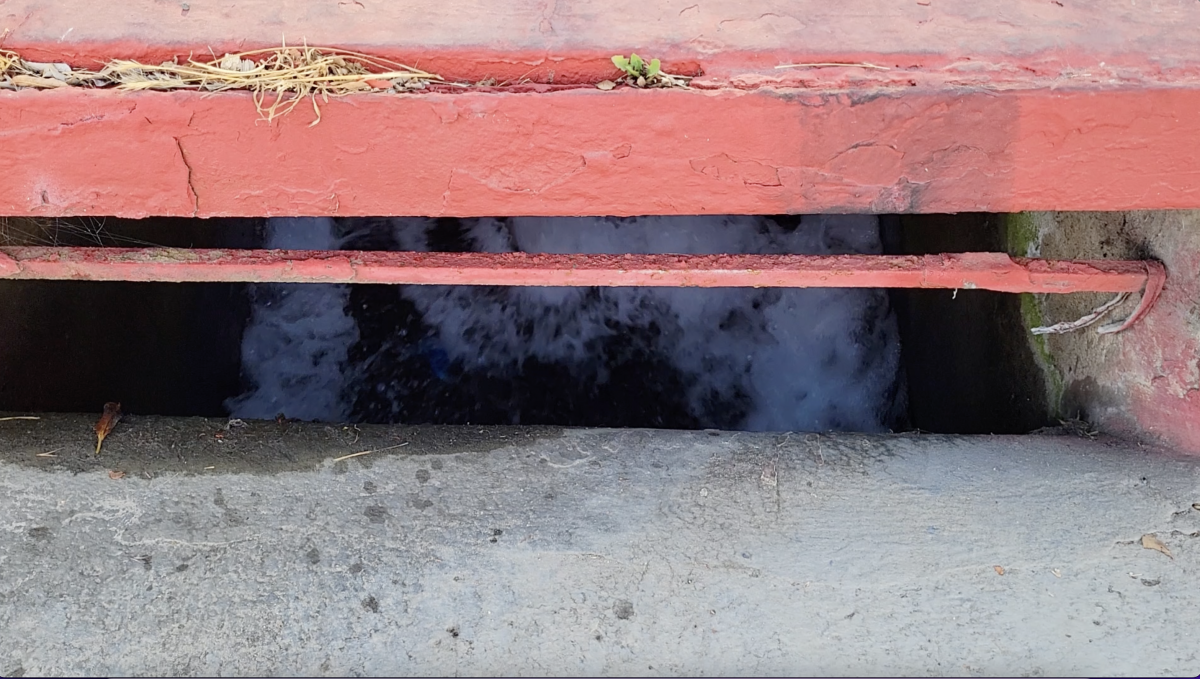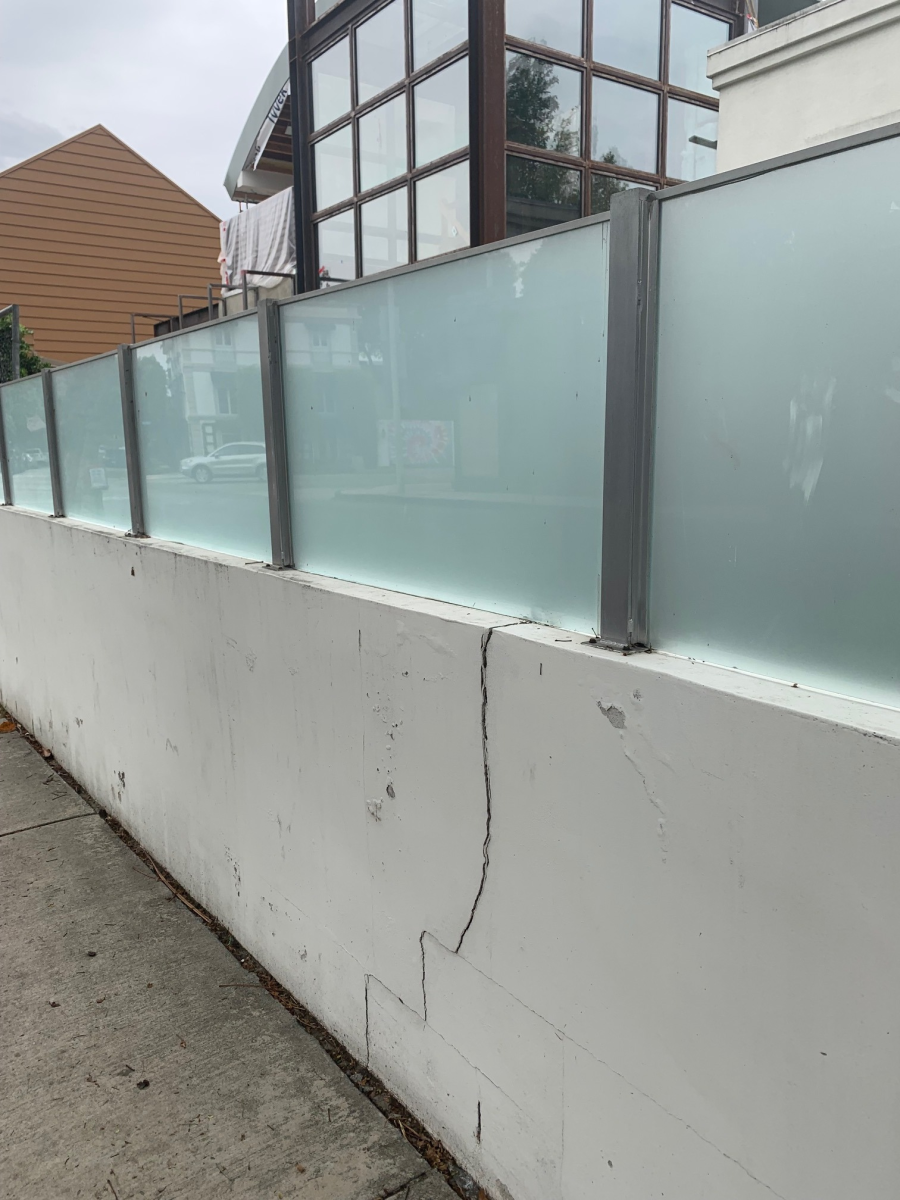Do As I Say, Not As I do When It Comes To Water Conservation Says We-Ho
Here we are in the midst of a drought once again or as I prefer to refer to it - climate change, when we as residents and businesses are asked to conserve water and reduce water consumption. If you presently live in an area where your water agency receives water from the Colorado river through wholesaler Metropolitan Water District (MWD), you have been asked to desist from outdoor water use for 2 weeks while emergency repairs take place; or as someone succinctly said to me - what about washing your car?
California doesn't have a water shortage problem, we have a water management problem.
Right here in the City of West Hollywood, is a huge water management problem. The sub-aquifer West Hollywood sits on, is being depleted of water on a daily basis and the city and water agencies refuse to do anything about it. This has been brought to the attention of WeHo City Council, WeHo Planning Commission and the Los Angeles Regional Water Quality Control Board by residents and the Sierra Club Water Committee.
This began many years ago, when a resident noticed his trees and other neighborhood trees dying off. Intrigued, he asked an arborist to his residence to diagnose his dying trees. What he learned that day set him off on a mission to correct a wrong. In his search for allies and at his wits end, someone told him about Sierra Club. He had never heard of Sierra Club before this; and so began a 7 year journey working on this issue.
The WeHo sub-basin is what is considered a shallow water basin, which means that the water in that aquifer sits at about 8 - 10 feet below the surface of the street. The trees of WeHo had gotten used to having access to this water, and suddenly or not so suddenly that water source was no longer present for their roots to tap into. Why you may ask?
The City of West Hollywood began issuing building permits for subterranean parking and private homes with basements. Since 2010, 1349 building permits have been requested, 451 of them have been approved with the rest under review. In addition, 175 development permits have been requested during the same period, 91 of them having been already approved. There has been a huge increase in construction.
Because the water table is so readily accessed during construction, construction companies apply for and are issued NPDES permits to pump the water out of their construction zones, so they can build. This is called "dewatering". Dewatering can be defined as the process of draining rainwater or groundwater from an excavated area before construction can begin. NPDES permits are issued by the Los Angeles Regional Water Quality Control Board.

Water flows down storm drain on the corner of Melrose Ave & Almont Drive
This dewatering doesn't stop after construction, because the water keeps replenishing itself, so there is continuous contaminated water being pumped into the drains going to an already heavily contaminated Ballona Creek and Santa Monica Bay. Groundwater in the Hollywood Subbasin is replenished by percolation of precipitation and stream flow from the higher areas to the north. Paving of streets and lining of drainage channels have decreased the amount of surface area open to direct percolation into underground aquifers, thereby limiting replenishment of the aquifer through a natural process. Some businesses such as the Pacific Design Center, treat and reuse some of that water, however, most do not.
If you walk around the neighborhood you can catch some of this dewatering occurring in the wee hours of the morning or in broad daylight on the corner of Melrose Ave and Almont Drive. You can see the 2-foot wide pipe gushing water 24/7. You can hear it before seeing it.
So, again, exactly why should we residents heed the call to conserve, when the city is allowing so much water to be wasted on a daily basis from construction zones all over the city?
The theme for World Water Day 2022 was Groundwater: Making the Invisible – Visible. Have you ever taken the time to think about the groundwater beneath your feet? Or where your water comes from?
Groundwater is basically water stored underground through millennia via the process of snowmelt and rain seeping through the porous earth to an aquifer. It fills the spaces between rocks, gravel, and soil beneath the earth’s surface. Groundwater is fairly pristine because of the process it undergoes to get into the aquifer. Alas, however, with industrialization we have contaminated most of our groundwater sources.
Groundwater depletion or over-drafting is primarily caused by the over-pumping of groundwater from the aquifer. This leads to land subsidence (surface land falls/drops), lowering of the water table, and increased costs as you have to drill further and further underground to reach water, then pump it back up to the surface. This also reduces water surface supplies – groundwater and surface water are connected, you reduce one, then you reduce the other. You can read more in an article I wrote on groundwater earlier this year on the Angeles Chapter blog.
How does ground subsidence affect you, the homeowner?
When large amounts of groundwater have been withdrawn from the ground, the rock and soil compact because the water is partly responsible for holding the ground up, when the water is withdrawn, the rock and soil falls in on itself, causing the ground under your property to sink. This means the foundations of your home can become unbalanced, moving the walls and floors of the house from their original groundwork, and leading to cracks and destabilization of your house. This in turn affects your property value.

Image: Cracked foundation wall in West Hollywood by Charming Evelyn
For further evidence, if you look at the homes directly next to the dewatering site at the corner of Robertson and Ashcroft and the one next to Restoration Hardware (also a dewatering site) on West Knoll, you’ll see clearly that both homes have outer walls that are cracked from top to bottom. A Dutch study broke down how different kinds of subsidence affected property values, finding that uniform subsidence of a house and its surroundings lowered its value by 6%.
The West Hollywood Sub-Basin
The Hollywood sub-basin is part of the Coastal Plains of Los Angeles Groundwater Basin. With a total storage capacity estimated at about 200,000 acre-feet. An acre foot or ACF for short is a football field, filled with one foot of water. To put that into perspective in California, an acre foot, or 326,000 gallons, can typically meet the annual indoor and outdoor needs of one to two average households. An average household is a family of 4.
A number of techniques can help recharge aquifers, preventing collapse. Capture and remediation of stormwater and wastewater reuse can provide water to recharge aquifers as part of a managed aquifer recharge program. Another approach is water-sensitive urban design, a reimagined city that includes green roofs, bioswales, rain gardens, pervious pavement, artificial wetlands, and urban forests. Of course we can always reduce demand on the aquifer.
It’s time to tell the City of West Hollywood and the WeHo Planning Commission to stop issuing permits for basements and subterranean parking that require dewatering and put the water being wasted to beneficial use for the community.
Write the City of WeHo! Letters or petitions should go to:
Ric Abramson
Weho City Staff Member
Urban Design + Architecture Studio Manager
David Gillig
Planning Commission Liaison
It’s time to look for solutions and invest in capturing and treating that water for reuse. Don’t waste, then ask us to save!
Blog Category:


Add new comment